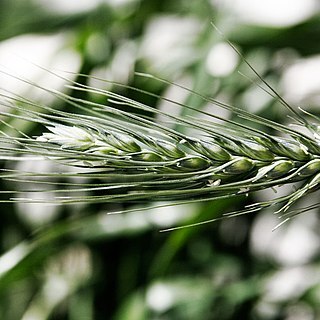Plants annual [rarely perennial]. Culms usually erect. Spike distichous, very dense; rachis usually very brittle, pubescent. Spikelets 1 per node, sessile, with 2 florets, occasionally with rudimentary 3rd floret. Glumes linear-subulate, keeled, hispid along keel, margin membranous, apex acuminate or awned. Lemma lanceolate, asymmetric, 5-veined with 2 marginal veins forming keels, hispid along keels, apex acuminate or tapering into long, straight, scabrous awn. Palea equaling lemma, smooth or scabrous along keels or ciliate distally, apex 2-dentate. Lodicules ciliate distally. Caryopsis oblong, somewhat laterally compressed, deeply furrowed, apex pubescent. x = 7.
Infl a bilateral spike with sessile, solitary spikelets borne flatwise to the rachis; spikelets 2-fld, the rachilla prolonged beyond the upper floret as a bristle-tip that may bear a vestigial third floret; glumes narrow, rigid, keeled, lemmas lance-subulate, excentrically keeled, 5-veined, shortly bilobed, the keel and marginal nerves strongly ciliate, tapering above into a straight rough awn; caryopsis deeply furrowed in back, hairy at the top; annual or perennial grasses. 5, temperate Eurasia.

